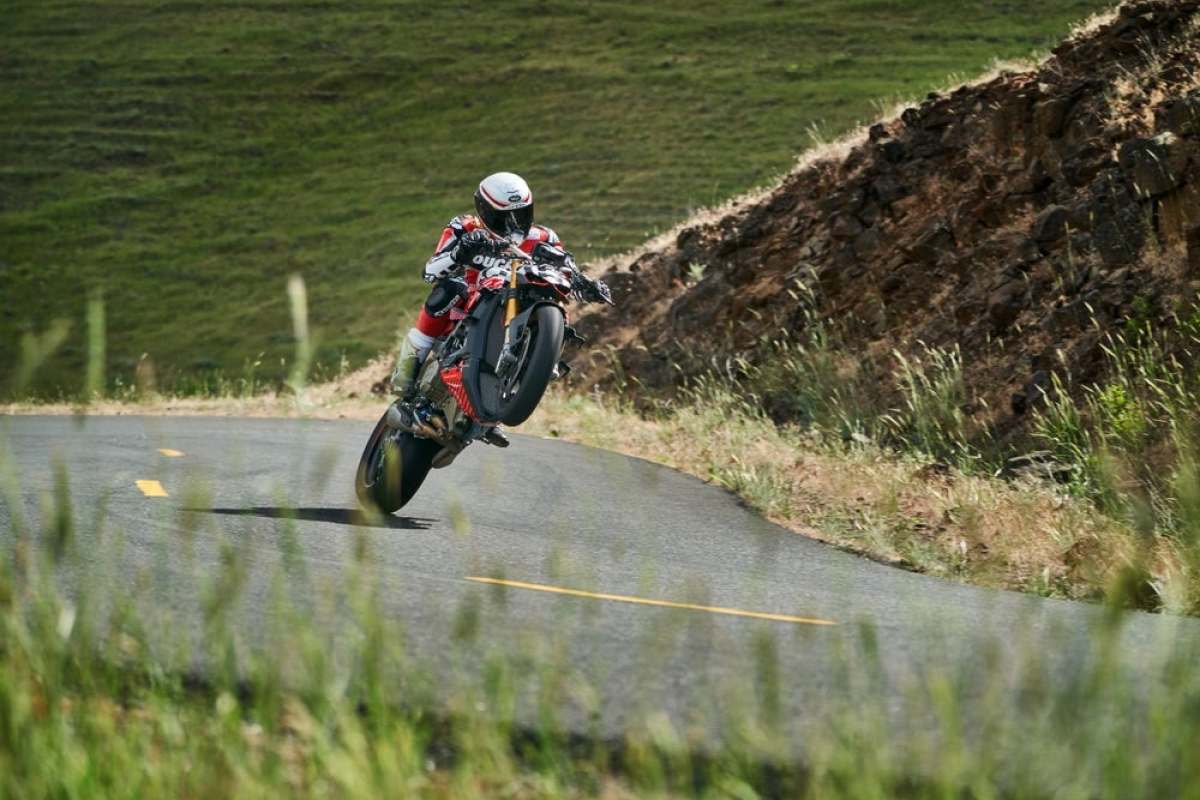Pikes Peak is known as America’s Mountain, the peak that inspired Katherine Lee Bates to write “America the Beautiful.” It stands 14,114 feet high and the road to the top twists and turns its way along 19 miles of jaw-dropping vistas and teeth-clenching drops over the side of the mountain, with few guardrails. It is also home to the Pikes Peak International Hill Climb, an annual race of cars and motorcycles that has been going on since 1916.
So on a tight, twisty road like this, with a distance of 12.42 miles to cover (the race doesn’t start at the very bottom), how fast do you suppose the record time is to the top? Maybe 20 minutes? That would be an average of around 60 mph on a road with numerous switchbacks and posted speeds of 20 mph or less in a lot of places. Pretty dang fast, right? Well, what kind of rider are you?

No, the record that the real hot-shots aimed for years—and finally broke last year—was under 10 minutes. That’s right, an average speed on this road in the neighborhood of 120 miles an hour! Yikes! And the record currently sits at 9:51.278 minutes. Now, that’s in a car. The fastest speed to date on a motorcycle is a measly 11:11.32, also set last year.
So what kinds of bikes do they run in this race? There’s a variety. Just looking at the 450 Pro division, in 2011 the top bike was a Kawasaki KXF. Winners other years in other divisions include the likes of the Yamaha YZ 250, the Suzuki RM250, and a ton of others.
Although the hill climb itself takes place on just one day, the entire week leading up to the race is given over to preparation. The cars and bikes are divided into numerous classes and every morning the road up the mountain is closed to tourist traffic early on. The mountain is divided into sections and each day different classes gather in different sections in the pre-dawn darkness to get a feel for that piece of the road. As soon as the sun starts to rise the runs begin, with everything to conclude by 9 a.m. so the road can be opened for normal use. After three days of test runs everyone has had the chance to ride each portion of the mountain, at the cost of serious loss of sleep.
Race day is more of the same. All racers must be up on the mountain by about 4 a.m. Spectators who want to watch from anywhere other than the starting line generally camp out the night before, the only night of the year that camping is allowed on the mountain.
After such an early arrival it becomes a matter of hurry up and wait. Each year it alternates between cars and bikes as to who goes first. If you’re racing a motorcycle and the cars are going first, your 4 a.m. arrival gives you about 8 hours to sit and wait for your turn. Even if your group is going first this year, however, you still need to plan on waiting at the top until all racers have arrived. No one is allowed to come down the mountain until everyone has gone up it.
Then, just to throw a monkey-wrench into it all, the big boys get priority. The big hot-shots who are running serious machines that they hope will set new records can, at any time, be given the road so as to take advantage of the absolutely best conditions. If the road is dry now but a storm is blowing in, they’ll want to run before it gets wet. If it’s cold and a warmer road surface will help with grip, they may not run until temperatures rise.
After it’s all over, the racers descend en masse and all along the way the spectators step up to the roadside to high-five them all as they pass. And then it’s all over until time to do it again next year.